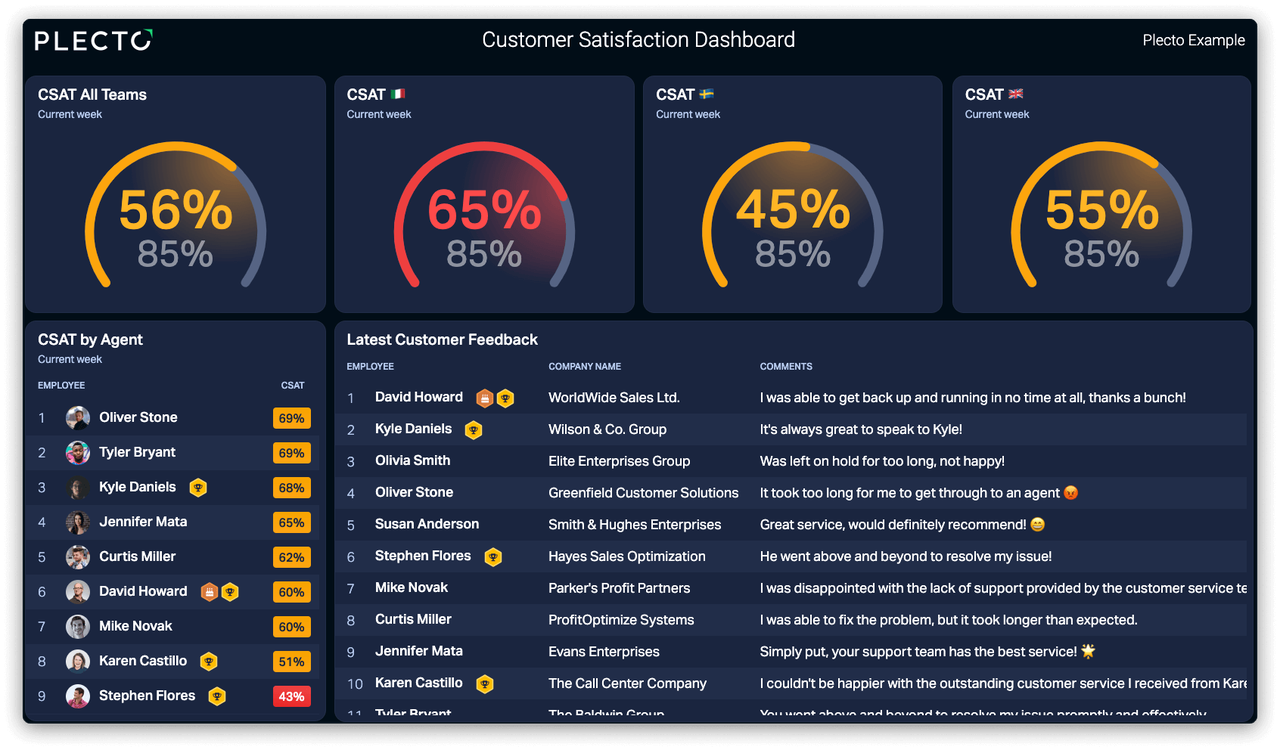“Quiet quitting” is a buzzword that’s on most managers' minds this year – and with good reason. Gallup suggests at least 50% of the US workforce is quiet quitting. So what are the key employee retention metrics to track if you’re looking to shore up employee engagement and satisfaction over the long haul? Read on to uncover the five best employee retention metrics to track in 2024.
Why Employee Retention Matters
In 2022, Gallup’s State of the Global Workplace report found that only 21% of employees are engaged at work, costing the global economy $7.8 trillion annually. Employees who feel motivated and passionate about their jobs stay in their positions longer, perform better, and help create a positive workplace for everyone. Conversely, poor employee engagement is a key driver of quiet quitting – and ultimately, resignations.
Recruiting, hiring, and onboarding new employees is an expensive process in terms of direct costs but also in terms of reduced productivity as positions stay vacant and new hires get up to speed in their new roles. Some experts estimate that filling a vacant position costs as much as twice the employee’s annual salary, which can really add up! Losing a long-time and well-liked employee can hurt morale and even set off a chain of resignations. Therefore, there’s a lot at stake when it comes to tracking the right employee retention metrics and investing in retaining the employees you have instead of new hires who might not be a good fit for your company and its culture.
What is a “good” employee retention rate?
Your first inclination might be to strive for 100% employee retention. Not so fast! Sometimes losing a few low-performers paves the way to hiring high-performers. Industries like customer service, food service, and retail have higher turnover than almost any other industry. But for most industries, 90% is generally considered the employee retention rate that companies should try to achieve. This is enough to weed out the dead weight while ensuring that your top- and middle-performing employees are challenged, satisfied in their roles, and producing results.
5 Employee Retention Metrics to Track
Looking into which employee retention metrics to track is a powerful first step toward proactively addressing employee satisfaction to help you hang on to your star performers while minimizing the risk of quiet quitting. Choosing 2–3 of the following five employee retention metrics is an excellent starting point. You can add the others after you become familiar with what these first employee retention metrics are telling you.
1. Employee Satisfaction/Employee Net Promoter Score (eNPS)
It almost goes without saying that happy employees are more likely to produce quality work, and are less likely to quiet quit or resign. But how happy are your employees? Have you asked them? You might think you’re doing everything right by offering things like bonus programs, coaching, and professional development opportunities. But it’s all for nothing if your efforts aren’t resonating with your employees. To get to the nitty-gritty of how your employees really feel about coming to work, conduct a regular and anonymous mini-pulse survey or eNPS. While NPS is typically used to gauge customer satisfaction, eNPS gauges employee satisfaction by asking, “On a scale of 1–10, how likely are you to recommend our company as an employer to a friend?”
Large companies that regularly hire a lot of new employees often track this metric for new hires (e.g., during their first six months on the job). It helps employers to understand how their new employees are settling in and whether they’re satisfied in their new roles. This is an effective way to head trouble off at the pass and help companies protect the investment they’ve made in the hiring process.
2. Voluntary and Involuntary Turnover Rates
Voluntary and involuntary turnover rates are employee retention metrics that measure the percentage of employees who leave a company within a specific timeframe – and both can yield valuable insights into your company and its hiring culture. Voluntary turnover rate measures the rate at which employees resign of their own accord, and it could indicate issues with salary, benefits, incentives, or the company culture. To pinpoint the root of the issue, consider conducting exit interviews with volunteer quitters. Involuntary turnover measures the rate at which employees are let go at the company’s behest – generally due to poor performance, attendance issues, or not performing adequately during their initial probation period. A high rate of involuntary turnover could highlight issues in the hiring and vetting process, which is causing the company to hire people who just aren’t a good fit for the position or the company.
Use this formula to calculate turnover rates using numbers for a particular timeframe:
Number of employees who leave voluntarily/involuntarily ÷ Total average number of company employees x 100 = Voluntary/Involuntary Turnover Rate
3. Retention Rate Per Manager
Employee retention isn’t just “an HR thing.” It’s also an important obligation for managers, who have the day-to-day responsibility of keeping their employees satisfied and performing their best. At a minimum, this means making sure that their direct reports have the information, tools, and training necessary to get their jobs done. But sometimes, a manager is a bad fit for the department – and that’s why this is one of the most important employee retention metrics to track. A poor employee retention rate for a particular manager often indicates that the manager is the culprit, and it will only get worse. It pays to look into this sooner rather than later, before the company loses more good people.
Use this formula to calculate each manager’s retention rate for a particular timeframe:
Manager’s total number of employees – Number of employees who’ve resigned ÷ Manager’s total number of employees = Retention Rate Per Manager
Build your first dashboard.
Start your 14-day free trial today

4. Absence Rate
An epidemic of absenteeism (i.e., unplanned absences) could indicate problems. Spiking numbers of “sick calls” could be an early indicator of future retention issues. In a vacuum, one-off absences are easy to overlook but they can help companies to nip trouble in the bud if they’re identified as part of a negative trend.
Use this formula to calculate the absence rate for a particular timeframe:
Number of unexpected absences ÷ Total number of workdays in the same timeframe x 100 = Absence Rate
Absence rates can be calculated per employee, team – or at the company level. This is one of the best employee retention metrics to track if you’re looking to identify quiet quitters, potential management issues within particular teams, or broader issues that could indicate company-wide culture issues.
5. Employee Turnover Cost
We’d be remiss not to mention the financial implications of turnover in our list of employee retention metrics to track. Companies that manage to maintain the right employee retention rate achieve greater profitability in terms of reduced HR-related costs and improved productivity among their employees.
Use this formula to calculate the employee turnover cost for a particular timeframe:
Sum of turnover-related costs associated with x Total number of employees who leave the company voluntarily or involuntarily = Employee Turnover Cost
To get the best overview, it’s important to be thorough when adding up your costs. In addition to the direct costs associated with recruiting and hiring, remember to account for things like lost productivity during onboarding or while the position is vacant. In the case of involuntary turnover, you’ll want to include things like severance and other benefits that the company will pay out during the severance period.
Track These Employee Retention Metrics with Dashboards & Automated Reporting
Tracking and acting on these five employee retention metrics will help you get started with a more data-informed approach to hanging on to your best employees! Plecto makes it easy to visualize your metrics on dashboards using real-time data – and also enables you to schedule and generate automatic reports using real-time data to help you stay on top of what’s happening with your employees.




